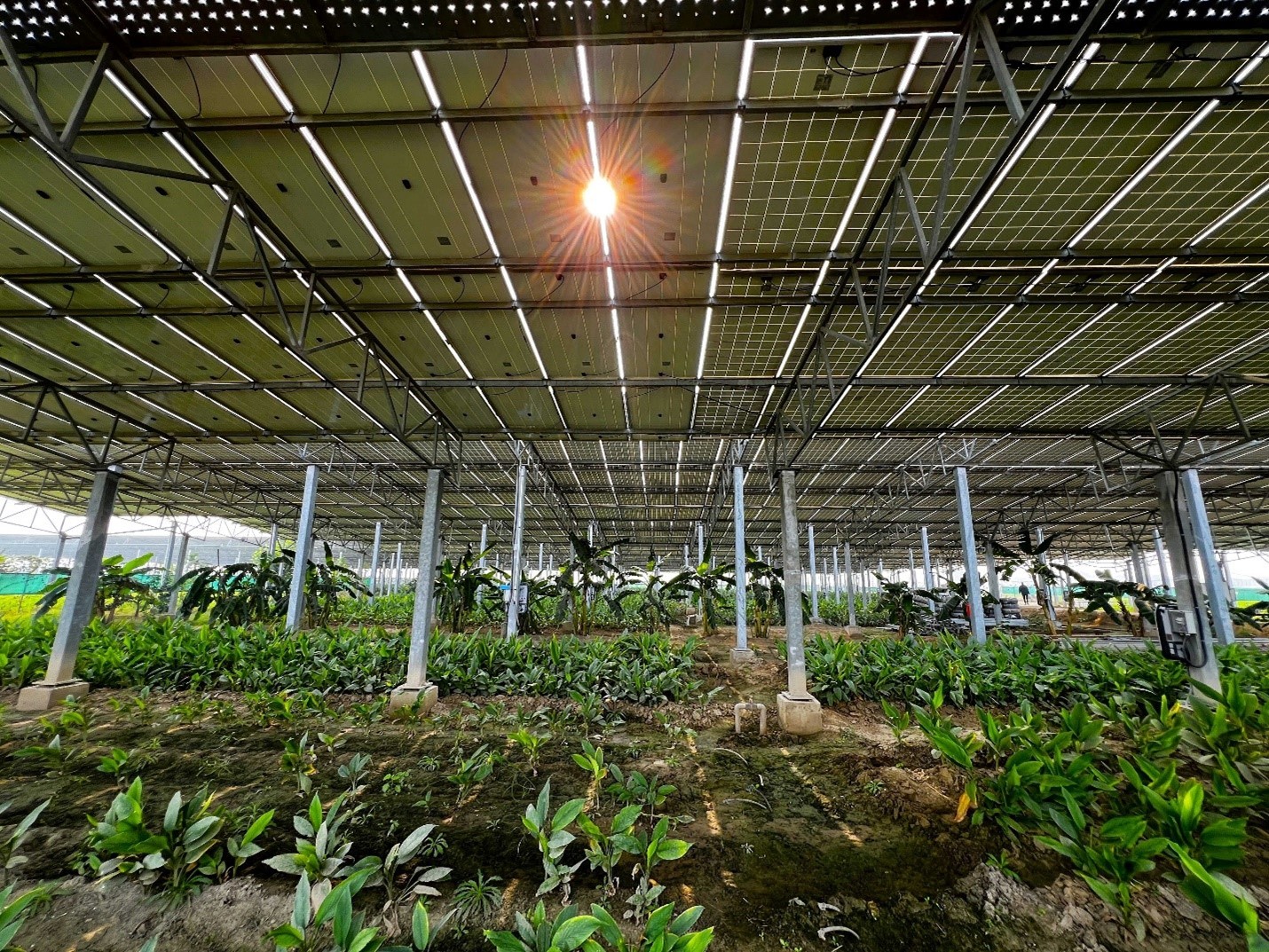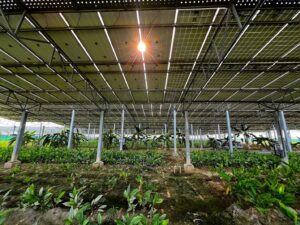Agriculture sector is the backbone of India’s economy and a majority of India’s population is dependent on it as a source of livelihood. Even during the current time of COVID-19, the agriculture sector has been less affected and it has come to the rescue of India’s economy in this crucial time by providing both food and employment while other sectors of the economy are going through a very difficult phase with large scale lay-offs.
In these challenging times, the Government of India recently passed three new bills namely the Farmers’ Produce Trade and Commerce (Promotion and Facilitation) Bill, 2020 (FPTC); the Farmers (Empowerment and Protection) Agreement of Price Assurance and Farm Services Bill, 2020 (FAPAFS); and the Essential Commodities (Amendment) Bill, 2020 to bring reform in the agricultural sector and to increase the income of farmers.
While passing these important agricultural bills, the government has expressed a positive intention to see the growth of India’s agriculture sector and to increase the income of farmers by opening up the agricultural sector for better participation of the private sector. At the same time, these acts do not clearly elaborate how this would be possible and rely on the fact that the flexibility and provisions of these acts would provide stimulus and encourage private players to participate and collaborate with farmers in a market driven situation.
The question arises whether these targets are realistic and if these acts would bring the intended results. The answer to this question is uncertain at this point in time. However, some idea can be obtained from the recent survey on the farmers’ perception about these new agricultural laws and the performance of past initiatives of the government in the agriculture sector.
Gaon Connection Survey
To understand the perception of the farmers, Gaon Connection, India’s biggest rural media platform, recently conducted a survey ‘The Indian Farmer’s Perception of the New Agri Laws‘ in October, 2020. As per the study, an overall 67 per cent farmer respondents were aware of the three agricultural laws. Also, around half of the farmers opposed these acts while around one-third of them supported the acts, while the remaining were not aware about the acts.
The survey results brought into focus a few things. First, there is a deep divide in perception of the recently enacted three farming laws amongst different types of farmers in terms of landholding size (marginal and small farmers vs medium and large farmers). A greater proportion of marginal and small farmers (37 per cent) were in support of the acts than the medium and large farmers (31 per cent).
Secondly, there is a different perception about the laws in different geographical regions of India (North-west, North, East, West and Southern part of India) cultivating different types of crops. The opposition to farming acts was maximum in the North-West region of India (77 per cent) in comparison to other parts of India.
Thirdly, awareness about the acts was a big concern as of the 52 per cent farmers opposing the recent agriculture laws, around 36 per cent of them were not aware about the details of these laws. Similarly of the 35 per cent farmers supporting these laws, around 18 per cent were not aware about the details of these laws.
The major learning from this is our policy at the central level should consider the dynamics in different geographical regions of India. Each region cultivates different types of crops, has different types of farmers and their awareness about government policies differ, too.
Government intervention to boost agriculture
There were two other major government interventions of the government to boost India’s agriculture sector, post Independence. The first was the Green Revolution which helped in an increased production of food crops and the second one was the introduction of a minimum support price (MSP) for crops to provide options to farmers to sell their agricultural produce at government fixed rates.
The idea behind MSP is to provide farmers a guaranteed price and an assured market and protect them from price fluctuations and market imperfections. Both of these interventions happened around the same time in 1966. While the Green Revolution was to increase agricultural production by increasing agricultural productivity by using hybrid seeds, fertilizers and pesticides, the MSP was to provide a safety net to farmers. The MSP was first extended to wheat which saw major increase in production because of the Green Revolution and later it covered other crops too, including rice, sugarcane, cotton, jute and pulses.
The impact of the Green Revolution is mainly limited to the North-west part of India, particularly Punjab, Haryana and Western Uttar Pradesh. In these areas almost all land is irrigated and the proportion of medium and large landholdings are more. Also, farmers in these areas adopted technology and used hybrid seeds and fertilizers more efficiently than other regions of India. The impact of the Green Revolution is still limited to wheat and to some extent paddy in Punjab, Haryana and Western Uttar Pradesh and not so much in other crops.
Although the Green Revolution helped in achieving better agricultural production, it was limited to only certain areas and therefore created regional inequality. There does not seem to be any initiative by the successive governments to gauge why the Green Revolution was not as successful in other areas like the eastern and north eastern parts of India.
There is a difference in the awareness about the benefits of MSP, too. A study was conducted in 2010-11 by the erstwhile Programme Evaluation Organisation of the Government of India which is now the Development Monitoring and Evaluation Office (DMEO) of NITI Aayog. It was published in 2016 by NITI Aayog in the Evaluation Report on Efficacy of MSP on farmers. Eighty one per cent of the cultivators were aware of MSP fixed by the government for different crops and out of them only 10 per cent knew about MSP before the sowing season. The awareness of farmers was less in eastern and north western part of India in Assam and West Bengal.
The Gaon Connection survey conducted in October, 2020, revealed that around 63 per cent farmers reported that they sold their crop produce at MSP and a greater proportion of farmers selling in MSP were from the north-west and southern states, where around three-fourth of farmers were selling at MSP.
The survey also revealed that even after nearly five decades of implementation of MSP, many farmers are still not aware about it depending on where they live and cultivate their produce. A large chunk of the farmers in India cannot sell their crops at MSP and end up selling at a lesser price even though MSP is government-controlled.
Temporary relief to farmers
After initiation of the Green Revolution and the MSP system in the 1960s, there has been some government policy-level support to revive India’s agriculture sector, but it has not had a national level impact.
The focus of major government support to farmers in recent decades in India has been in the form of waiving off farming loans and providing crop insurance. Both of the interventions are only temporary relief to farmers and do not address the systematic problems the agricultural sector in India faces. There must be intervention in areas such as an increase of productivity in a sustainable way with use of better technology, provision of adequate storage facilities to store produce to reduce wastage, and providing better price to farmers for agricultural produce through MSP or by linking to the market.
Other initiatives like the creation of a farmer producer organisation (FPO) are still limited in coverage. The Small Farmers’ Agri-business Consortium (SFAC), the major promoter of FPOs from the government’s side has been able to promote only 876 FPOs as per recent data, The low penetration of FPOs is quite evident in the recent Gaon Connection farmers’ survey with around two-third of farmers being unaware about FPOs.
Mahila Kisan Sashaktikaran Pariyojana, another flagship programme of the government to encourage and empower women farmers has tremendous potential to support agricultural growth, but it still has limited geographical coverage.
While the recent agri-acts show the intention of the government to bring reform in India’s agricultural sector, it should ensure the farmers get the benefit and are not being exploited by private players. The Green Revolution and MSP system, despite government intervention for so many decades, are still short of their desired outcome, so it would be premature to expect any immediate changes these acts would bring about in the agriculture sector.
However, based on the outcome of the Gaon Connection survey, on ‘The Indian Farmer’s Perception of the New Agri Laws’, and the outcome of previous government programmes in the agriculture sector, it is now time to focus on region and crop specific agricultural planning and strategies with creation of awareness and capacity among farmers so that they benefit in a more equitable way.
Need for region and crop-specific strategies
For this, agro-climatic zones which influence the types of crops, provide a solid base for agricultural planning and interventions at the micro-level. India is unique in its geographical position and has almost several agro-climatic zones. Each agro-climatic zone has its own soil condition, altitude and rainfall pattern. It is easier therefore to plan out types of crops to cultivate, and implement different agricultural interventions to increase productivity.
There can be convergence of implementation of different programmes of government and non-government stakeholders at the micro-level.
In this decentralised planning, environmental factors should also be considered and in view of any risk from the point of view of environmental sustainability, strategies can be prepared accordingly. For example, in eco-sensitive areas, an organic farming approach may be considered. An example of this is Sikkim, which falls in the eco-sensitive Himalayan region where organic farming has been successfully promoted.
Several other factors also come into play which influence the appetite and feasibility of adopting new measures. It can depend on the kind of farmers there are, the different kinds of landholdings, and socio-economic factors such as levels of education.
Awareness must be created about different interventions by periodic capacity building camps at the micro-level. It should be ensured that farmers get the benefit of the government supported MSP system, FPOs and participation of private players also play a key role.
To better address the problems of the agriculture sector in a systematic manner, the policies should not see India as a homogeneous entity. They should address the diversity of farmers in terms of landholding size and socio-economic conditions, area wise market linkages, types of crops and agro-climatic conditions. Region, crop and types of farmer- specific approach in a decentralised way would help in understanding the problems, strength and potential of India’s agriculture sector. The crop-specific strategies need effective and successful collaboration amongst central government, state governments, banks, non-profits, FPOs and private players working in the agricultural sector.
Most of these interventions explained above are already there in various government interventions and these can be implemented in a decentralised manner at the micro-level to achieve agricultural potential and growth in a more equitable and sustainable way.
Biswaranjan Baraj is a development researcher working on the issues of social and economic development and sustainability. Views are personal.


















